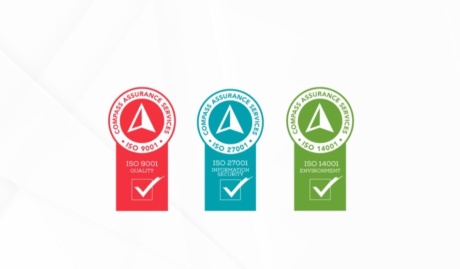Whether you are a Digital Transformation powerhouse, or you provide the best Tree Lopping services in Brisbane, technology is integral to the success of your organisation. This is especially true for small to medium businesses where margins can be thin, and the market competitive. To remain agile it’s critical to extract the most out of your technology. One way to do so is to engage the right Managed Service Provider (MSP) to provide outsourced IT support and services.
What is a Managed Service Provider?
A Managed Service Provider is a company that gives organisations the capability to outsource their IT service delivery requirements. In other words, an MSP is essentially your IT department. If something breaks, they are on the other end of the phone to make things work again. A good MSP will also actively keep an eye on all systems, proactively resolving issues before they even impact business.
A great MSP will invest the time to learn your business deeply enough to make recommendations and actively partner with you on enabling your team to achieve their goals.
When do I need a Managed Service Provider?
All businesses need IT support to some degree. These days it’s just part and parcel of doing business. Some organisations may be able to get by doing their own IT support, or perhaps only calling on an IT expert from time to time when things really get out of hand. But irrespective of how you currently manage your IT, at what point is it time to level up and engage with an MSP?
Here are some common signs it might be time to investigate whether engaging an MSP would be valuable for your business.
You don’t have a dedicated IT department or IT staff member
It’s probably fair to say that there are many businesses operating with one person wearing a multitude of hats, one being the “IT guy”. The problem with this is that, while this person is probably more tech savvy than the average bear they are probably not up to date with the latest IT developments. It’s also probably a significant challenge for this busy person to balance the IT needs of the organisation whilst also remaining productive at their core job. Ultimately this leads to IT only receiving reactive attention when absolutely necessary, and a clear loss of focus and productivity from the lucky person.
You could hire a dedicated IT person (which is undoubtedly a better option than folding IT responsibilities into an existing role within the organisation), but not only is this a significant investment, what if your IT person gets sick or needs to take leave? Add to this the challenges of not only recruiting, but supporting, management and developing a lone IT staff member, and this option can often prove a poor investment.
Instead of hiring your own in-house IT staff, you could consider using an MSP who can give you the benefits of a full IT department at a fraction of the cost. Your employees can focus on your core mission and you can rest easy knowing that your IT demands are being professionally managed.
You experience ongoing technology headaches
When the systems we use on a daily basis break down, business owners very quickly realise that the technology powering their business is incredibly complex. If the technology under the bonnet in your business is constantly experiencing problems, there is a good chance that this is significantly impacting your staff happiness, customers experience and of course your bottom line.
Partnering with a quality MSP can take you from a reactive, painful break-fix cycle to a situation where you are empowered to plan your IT Strategy and benefit from reduced maintenance and replacement costs. A quality MSP will take a proactive approach to the maintenance, patching and monitoring of your technology and make business-focused recommendations on how to improve the business through technology (rather than selling you the latest technology, with its relevance to the business as an afterthought). Proactive is always a better, more economical option than being reactive.
Your IT costs are unpredictable
It can be challenging to budget effectively for your IT requirements. Some months you might have to replace a laptop, while others may see you need to stump up for a new server or address a critical security incident that needs to be dealt with immediately. This is an even harder task for smaller businesses.
The ability to budget your IT services on a monthly basis makes planning how to spend your valuable dollars much easier. As well as more predictable costs for your services, your systems are actually kept in better working order and will last longer with professional programmed maintenance. The right MSP will be able to work with you to understand your business requirements and stabilise your IT spend over the medium term with forward planning and budgeting.
What types of Managed Service Provider pricing models are available
Each Managed IT service provider will price their IT support contracts differently, however there are some common approaches that most MSP’s work with.
Per Device
This is a tried and true pricing model where customers are billed a predictable flat fee for the monitoring and maintenance of specific devices, such as laptop and desktop computers, servers and even mobile devices. The predictability and flexibility of this model is attractive to both customers as well as the MSP. Potential drawbacks could be in situations where customer organisations may have numerous devices used by the same employee.
Per User
The per-user pricing model is similar to the per-device pricing model, with the difference being that the flat fee is billed per end user per month and covers support for all devices used by each end user.
Tiered
The premise of the tiered managed service provider model is to build bundled packages of services, starting from a basic package and becoming increasingly more expensive based on providing more comprehensive services. Some companies use names like Bronze, Silver and Gold for each level.
As an example, a “Bronze” managed services package may include basic phone and remote support for an entry-level price. Bumping up to the higher priced “Silver” desktop managed services package, which may include proactive patch management and scheduled on-site visits, and the “Gold” package may include around the clock emergency after-hours support.
All You Can Eat
Sometimes referred to as “cake” pricing (whereby you buy the entire cake, rather than the individual components of eggs, flour and icing) this model provides a comprehensive service and the MSP essentially becomes the outsourced IT department of the business. The comprehensive suite of services is certainly valuable to the customer because it provides specialist industry experience and advice, but it doesn’t require the business owner to commit to their own permanent IT department when the business environment and their needs evolve over time.
How do contracts with MSPs generally work?
Before embarking on employing the services of a Managed Service Provider, an agreement will generally be drawn up to protect the client and the MSP and ensure clear communication between the stakeholders.
Most MSP agreements will generally answer the following questions:
- Who: Who are the parties involved? Of course, there is the MSP and client but are there any other third party entities in the picture?
- What: What services are being provided? What devices are covered? Arguably more importantly, what isn’t covered under the agreement? What are the expectations in terms of access and resources to facilitate the MSP in being enabled to deliver the required level of service?
- Where: Does the provision of services entail remote delivery or are on-site services included as well? If on-site is not covered, what is the hourly rate to do any on-site work? What client locations are included?
- When: What are the hours of operation? What are the Service Level Agreements for response time, resolution?
- How: What is the process for customers to submit a service request? How are issues escalated? What are the terms of payment for the account?
- Baseline
How do I choose a Managed IT Service Provider?
You need an MSP that is up to date with your technology.
Your Managed Service Provider should be on top of all technological aspects of your infrastructure. They should be able to discern and have a record of which updates need to be implemented, and what hardware needs to be replaced when necessary. They should also have systems in place that ensure the technicians looking after your infrastructure are kept up to date and informed.
You need an MSP that focuses on optimising your technology investment.
Your Managed Service Provider should be consistently evaluating the health of your infrastructure, ensuring that all systems are appropriately patched and secured, validating system utilization, recommending changes and upgrades to software and hardware when needed. They should be offering constant reviews on the overall status of your IT operations to ensure you are match fit. The true value of your MSP will be recognised not only by your technology being maintained at optimal performance and stability, but in enabling and empowering you to focus on your own core business and what really matters.
You need an MSP who works in a strategic partnership with your organisation.
Your Managed Service Provider should want to develop a strategic partnership with your organisation to ensure long term success for your business. An MSP should always have a top-level view of your entire IT infrastructure and how it relates to the operation of your business. In addition, your MSP should be able to respond and react to changing business conditions, and provide consultative advice to IT priorities and challenges that can affect your business even if they’re not currently responsible for it.
In short, a strategic partnership with a quality Managed Service Provider should enable you to plan and budget for your main IT expenses, rather than falling into a costly and unpredictable break-fix cycle. When you find the right MSP to suit your business needs, you will be able to focus on your core business, confident that your IT systems are running smoothly and proactively managed.



























